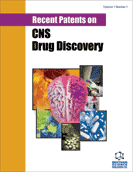Abstract
The cannabinoid system is constituted by some endogenous ligands (endocannabinoids), usually arachydonic acid derivatives, and their specific receptors. The endogenous cannabinoid system (ECS) is involved in the control of synaptic transmission, modulating memory, motivation, movement, nociception, appetite and thermoregulation. ECS also exert extraneural effects, mainly immunomodulation and vasodilation. Two cannabinoid receptors have been cloned so far: CB1 receptors are expressed in the central nervous system (CNS) but can also be found in glial cells and in peripheral tissues; CB1 receptors are Gi/o protein coupled receptors that modulate the activity of several plasma membrane proteins and intracellular signaling pathways. CB2 receptors are also Gi/o proteincoupled receptors; although it is accepted that CB2 receptors are not expressed in forebrain neurons, they have been described in activated glia. Some of the cannabinoids activate other receptors, for instance vanilloid receptors (TRPV1). Lately, the ECS is emerging as a natural system of neuroprotection. This consideration is based on some properties of cannabinoids as their vasodilatory effect, the inhibition of the release of excitotoxic amino acids and cytokines, and the modulation of oxidative stress and toxic production of nitric oxide. Such effects have been demonstrated in adult and newborn animal models of acute and chronic neurodegenerative conditions, and postulate cannabinoids as valuable neuroprotective agents. Patents related to cannabinoid receptors are also discussed.
Keywords: cannabinoids, neuroprotection, hypoxia-ischemia, brain
 5
5





















